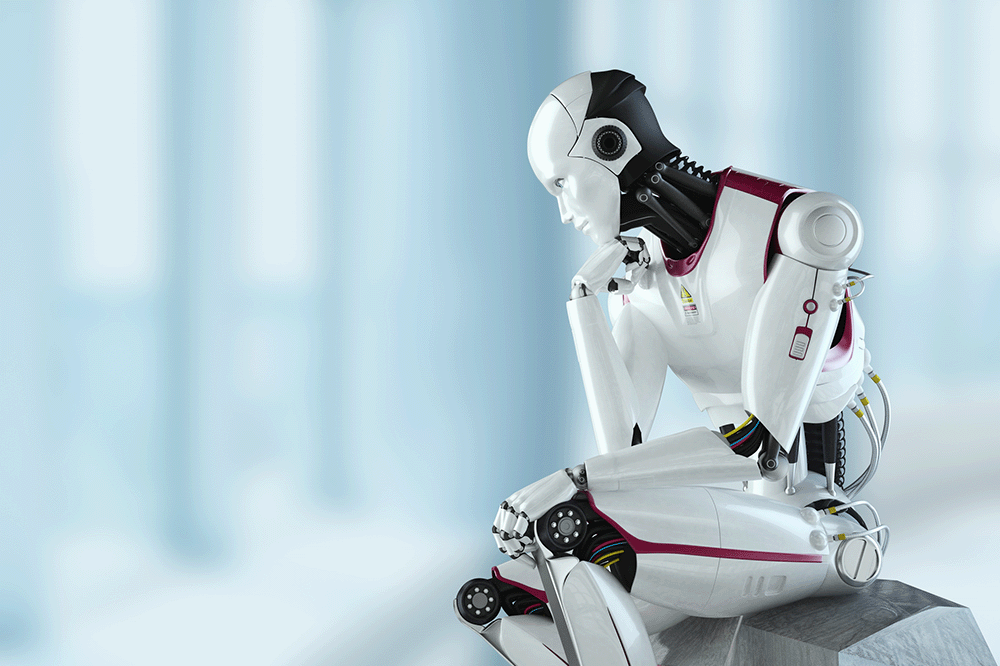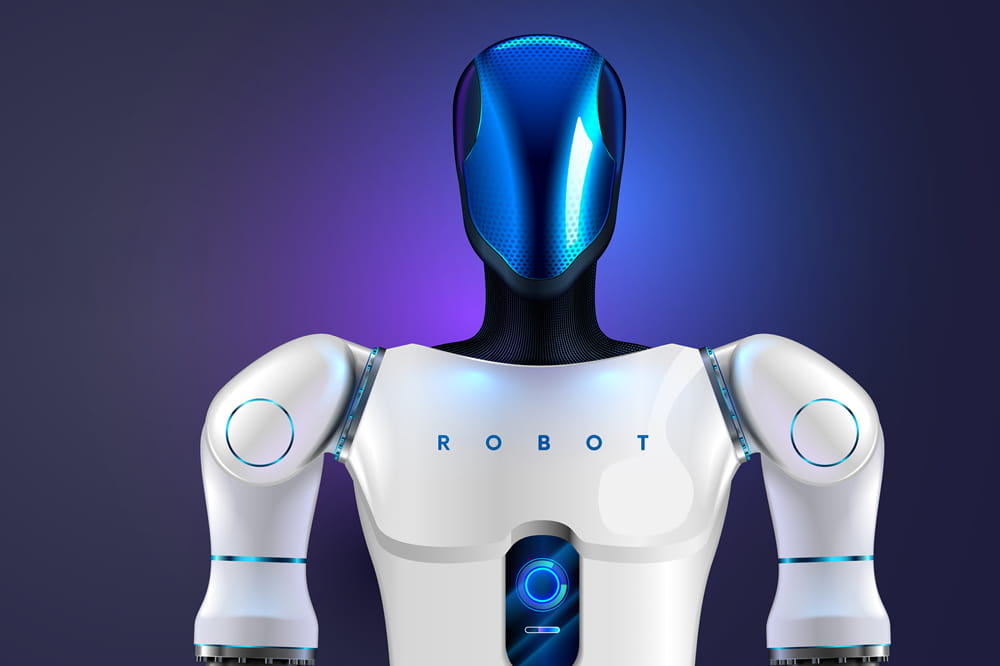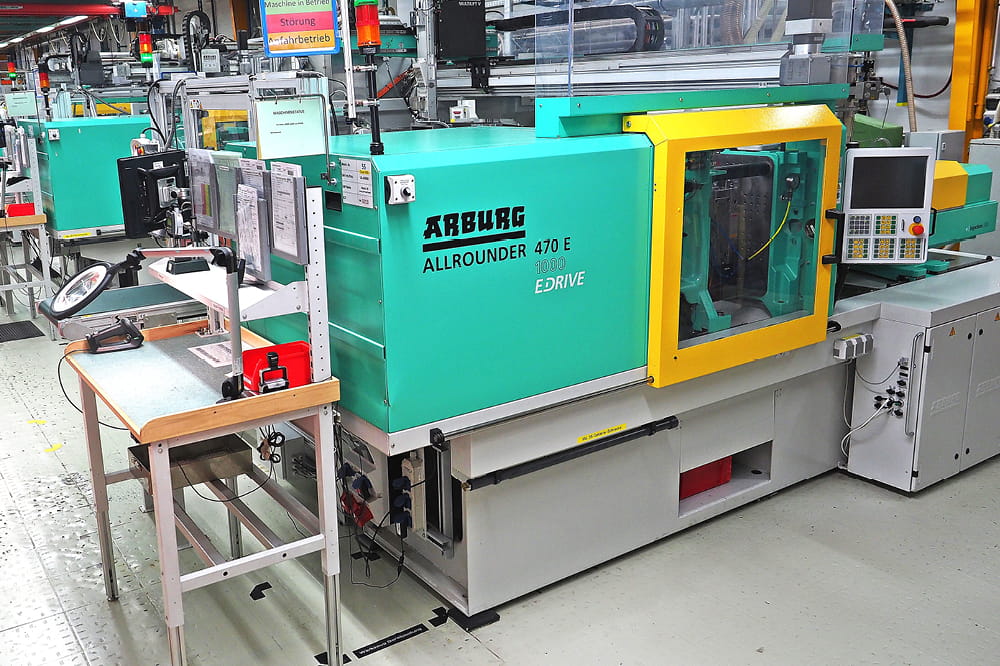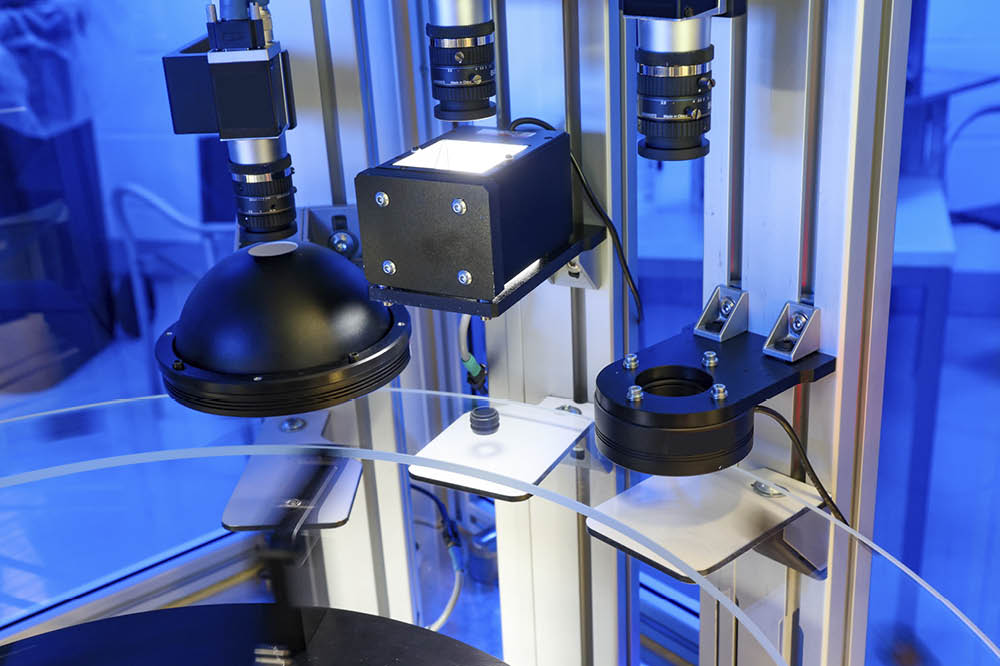Obtain news and background information about sealing technology, get in touch with innovative products – subscribe to the free e-mail newsletter.

22.02.2022 | Story
“Swab, Please, Dr. Robot!”
Can robots perform more precise incisions than human surgeons? Theoretically, yes. Nonetheless, autonomous machines won’t be operating on us for now. But medical robots have long been used in operating rooms – and they may be in our bloodstreams someday.
A robot was deployed in an operating room for the first time back in the 1990s. The “Robodoc” system was supposed to revolutionize surgery. It was able to cut bones more accurately and evenly than the human hand. It had important applications for the implantation of artificial hips as well. The more exact the cut, the better fit for the prosthesis. And the more quickly and effectively it will be able to bear loads. Robodoc is based on a customized industrial robot.
“It was also very precise,” said Dr. Beat Müller, Manager of the Department of Minimally Invasive and Robot-assisted Surgery at the Heidelberg University Clinic. But there was another issue that only became apparent later. “In isolated cases, the robot also cut away musculature,” Müller said. “And even with bones, there might be deviations that a human surgeon would likely have noticed during the operation – but the robot would not. In a retrospective in 2009, the magazine DER SPIEGEL called it a “lesson in German medical history.” Its assessment: The belief in the blessings of modern technology blinded many a doctor and even patients at the time. Perhaps Robodoc had come along too early.
Three decades later, more and more robots are at work in operating rooms. They have different names and look different. Müller welcomes robotics and is a supporter of so-called “minimally invasive surgery,” which damages tissue as little as possible. It requires a different approach and was viewed skeptically thirty years ago. Perhaps that is why he is so open to innovation today. “I’ve always wanted to try out new things,” he said. “My experience with them has been good.” Today’s generation of operating room robots combine the two aspects: Doctors today can perform minimally invasive surgery more easily with robotic support.
But Müller immediately makes it clear that the working with mechanical aids is not the same as working with autonomous robots. The “Da Vinci System,” the most frequently installed operating room robot today (with around 5,000 units worldwide), is ultimately nothing more than the extended arm of the surgeon. “It doesn’t do anything that the doctor isn’t doing,” Müller said. Only the doctor no longer stands right beside the patient – the surgeon sits at a display and controls the operation with a lever. “That is better ergonomically, and you more or less have a microscope in the patient’s stomach.” This allows incisions with a precision that a human hand would scarcely be able to achieve.
True automation in the operating room is tricky given the complexity of the human body, especially with regard to soft tissue – as the “Robodoc” so emphatically demonstrated. “The areas where it is really stable can be automated more easily,” Müller said. One example would be a biopsy through the skull. But he knows of promising research projects on automated intestinal sutures and autonomous camera work during minimally invasive surgery. In any case, robot-supported medicine is appealing, albeit expensive. “I have underestimated it for a long time: The market is too small. For developers, it is less attractive than robotics for the consumer sector,” he said.
Still, there is movement in the sector. It turns out that medical robots do not have to operate arms or wield scalpels. In May 2020, a team at the Stuttgart-based Max Planck Institute for Intelligent Systems published a report on micro-robots the size of a blood cell. The spherical robots could be introduced into the blood to deliver medicines to the exact spot where they are needed. The micro-robots can move and navigate against the blood’s circulation. “Our robots can independently identify cells of interest, such as cancer cells,” said Yunus Alapan, a post-doc in the Physical Intelligence Department. “And they can release molecules of active agents during their travels.” These micro-robots are still a long way from human trials, however.
In addition, entire swarms of the robots would be needed to ensure reasonable delivery of a drug. In November 2020, researchers at the Switzerland’s ETH Zürich presented a concept for a “micro-vehicle” that is taking a similar route. But the work involves only experimentation with materials at this point.
Prof. Dr. med. Beat Müller

Beat Müller received his license to practice medicine in Zurich in 1997 and moved to the Heidelberg University Hospital nine years later. He has been interested in minimally invasive surgery from the start of his career.
Since 2010, he has led the department of Minimally Invasive and Robotassisted Surgery in Heidelberg. During his tenure, the department has been honored for excellence.
“My focus has always been to develop our methods further,” said Dr. Beat Müller. He is open to new ideas.
One thing is clear: Even outside the operating room, medical robots will be relevant in the future and are expected to take over many tasks. “Robot nurses” could monitor patients, draw blood or help with hygiene. That would leave human beings with more time for jobs that they can do better than robots: communication and personal closeness. In 2018, Rutgers University in New Jersey, USA, developed a prototype for a robot that can draw blood and even immediately analyze it. “In the United States, blood is drawn two billion times every year,” Project Manager Martin Yarmush told Smithsonian magazine.
The British National Health Service (NHS) has been testing intelligent chatbots since 2017. Their artificial intelligence is expected to lighten the doctors’ workload during consultations. The logic is the same in each of these fields: Robots can take over repetitive tasks, giving staff greater latitude for work that requires human intelligence and intuition. After all, patients’ questions raise certain issues again and again – ideally, with robotic help, doctors would have more time for thorough diagnoses or discussions. In the future, “house robots” could accompany people home and sound an alarm in an emergency, lightening the load on hospitals or allowing the elderly to spend more of their lives at home. The appropriate prototypes have long been developed for many of these concepts.
Müller, the surgeon in Heidelberg, is drawn to robotics-related innovations. “Robots don’t take work from the surgeons – they make the surgeons better,” he said. “I find that to be a very appealing vision.” He doesn’t have the feeling that patients are intimidated by surgical robots – on the contrary. “Robots are more precise than people, are controlled by people, and a human can contribute flexibility and respond to different situations.” But he said it is crucial for patients to understand exactly what robots in the operating room do. “You cannot give the impression that robots create mischief without anyone noticing.”
More news on the subject Robotics

Join Us!
Experience Freudenberg Sealing Technologies, its products and service offerings in text and videos, network with colleagues and stakeholders, and make valuable business contacts.
Connect on LinkedIn! open_in_new











